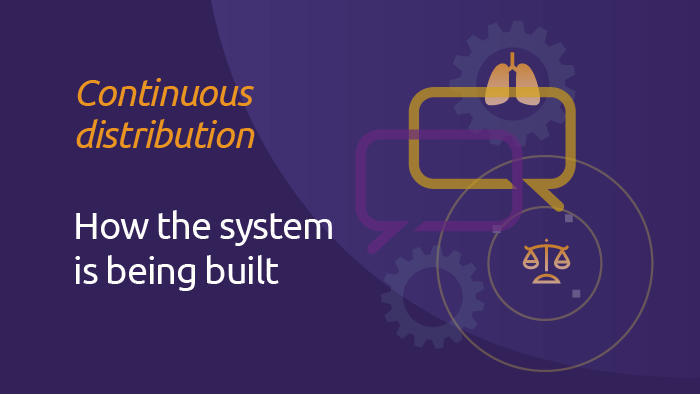The organ donation and transplant community is developing a more equitable system of allocating deceased donor organs. This approach is called continuous distribution.
Watch these videos to learn:
- How continuous distribution differs from the current system
- How the points-based system works
James Alcorn, UNOS Senior Policy Strategist, talks about the new framework and how it was developed.
How the new system works.
View an example of how the point system works (Please note, points shown in video do not reflect the final points for lung allocation).
What happened in public comment? See what the community had to say. View comments

Read stories of hope from patients like James
How will patients benefit?
- Multiple factors will be considered at the same time making it a more fair and flexible system
- Equity is predicted to increase among potential recipients
- Patients can provide their feedback earlier in the policy development process
- It’s a single distribution framework that can be adapted to all organ types
Organ distribution
A single allocation framework for all organs
The organ donation and transplantation system in the U.S. has never worked better than it does today. But every day, we work to continuously improve and make the system even more effective and efficient to serve all of the patients waiting for a lifesaving transplant.
The organ donation and transplant community is working together to introduce continuous distribution—a more fair and flexible approach to allocating donated organs to get the right organ to the right patient at the right time. Our policies have always been data-driven, but this new approach applies advanced analytic techniques to create an algorithm that makes every factor in the match run comparable.
The new framework was approved by the Board of Directors in 2018 as a model for future policy development. It will dissolve hard boundaries that exist in the current, category-based system and ensure that no single factor determines a patient’s priority on the waiting list.
Learn more about the continuous distribution framework, a timeline for development, and the impact the framework will have on future policy development for all organ types.
Creating a more fair and patient-focused system.
Learn more about how patients are prioritized in continuous distribution.
About continuous distribution
In 2018, the Board of Directors approved the Continuous Distribution model for future policy development. It will eliminate edge cases by dissolving hard boundaries and establishing a single allocation framework for all organs.
Organ allocation today
The current way candidates are prioritized on the waitlist ranks them by placing them into categories, including blood type and antibody sensitization.
For example, patients with an identical blood type to the donor are prioritized over patients that have a compatible blood type to the donor, because all things being equal, it’s generally preferable to match identical blood types. However, by placing one category before another, even the most medically urgent patient with a compatible blood type would wait until less medically urgent patients with identical blood types received offers.
The new system ensures no single factor determines placement.
A better way
The new framework moves organ allocation from placing and considering patients by categories such as blood type to leveraging big data analytics and considering multiple factors all at once using an overall score that operates on a sliding scale.
The composite score for each patient includes all factors—medical urgency, outcomes, candidate biology and efficiency of organ transport.
Certain factors will have more weight than others, giving them greater influence on the total score. The framework is designed to be easily “tunable.” If data suggests too much emphasis is being placed on one factor and not enough on another, the weights can be increased or decreased for others.
The new system ensures no single factor determines priority for donated organs.
Essential reading

Building a new, more flexible system for organ allocation
How multi-criteria decision-making methodologies and big data analytics are helping to design continuous distribution policies

Partnering with experts in fields outside of donation and transplant
Global leaders in advanced analytical methodologies lend support to build continuous distribution policies and improve the system
What happens next?
All organ systems are transitioning to continuous distribution, but the lung community is the first.
We monitor data to evaluate how policy changes are increasing transplants, equitably.
Kidney transplants, 29% increase
Two-year monitoring continues to show improvements in equity in access
Liver transplants, data monitoring
Increase in transplants, new policies having anticipated impact
